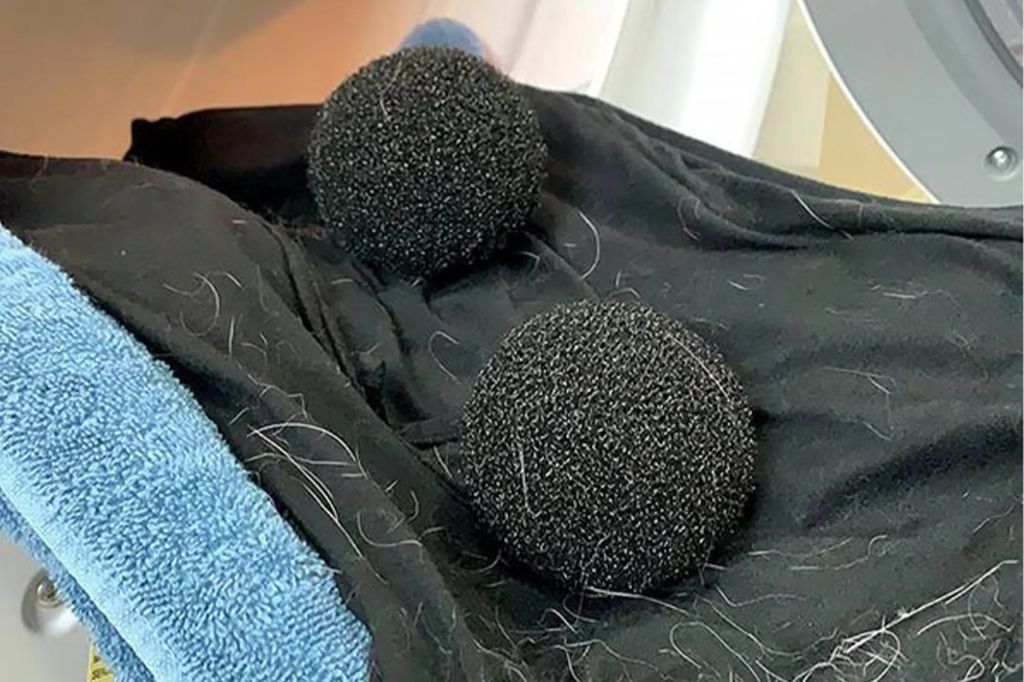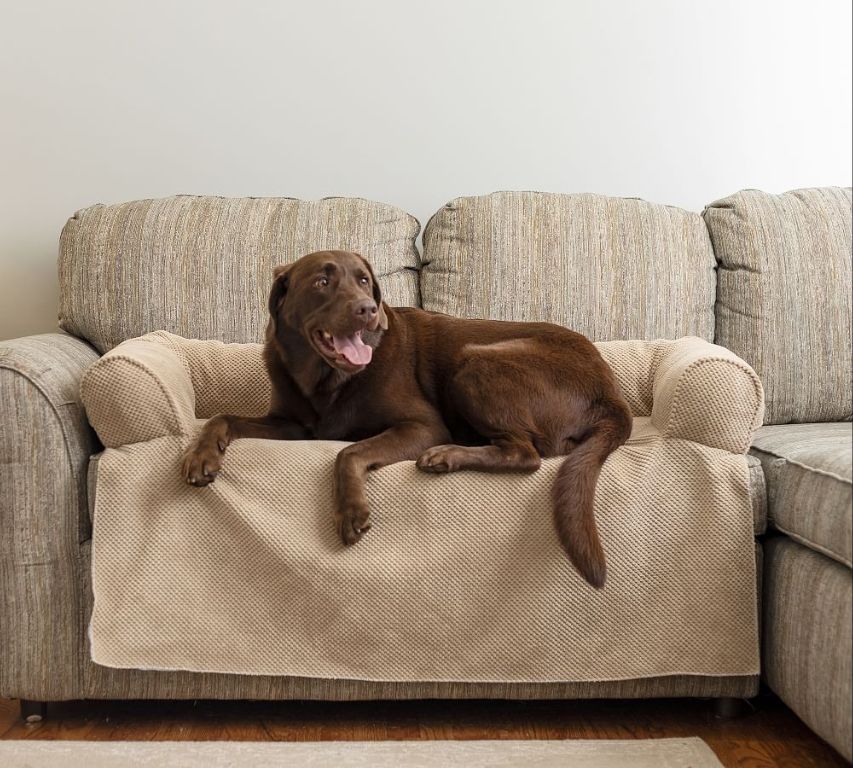Introduction
Dog owners deal with dog hair on clothes on a regular basis. With 44.5% [1] of U.S. households owning at least one dog, shedding is an inevitable issue that most dog owners face. On average, dogs shed their entire coat every 6-8 months [2], filling our homes and clothes with fur. While dog hair may just be an annoyance for some, it can cause real problems for others with allergies. Learning how to effectively remove dog hair from clothes in the washing machine is an important skill for any dog owner.
Removing dog hair from laundry can save time and frustration spent picking hairs off clothes. Proper washing techniques lift trapped dander and allergens from fabric as well [3], making clothes feel fresh and clean again. With some simple tricks and the right tools, you can get all the benefits of owning a dog without dealing with lingering fur on your clothes.
[1] https://www.thezebra.com/resources/research/pet-ownership-statistics/
[2] https://www.akc.org/expert-advice/health/how-often-should-dogs-shed/
[3] https://www.bhg.com/homekeeping/house-cleaning/tips/how-to-remove-pet-hair/
Why It’s Important to Remove Dog Hair
There are several reasons why it’s important to remove dog hair from clothes before washing:
Aesthetically, no one wants to wear clothes covered in dog hair. It simply looks messy and unkempt. Dog hair on your clothes can potentially be embarrassing in professional or formal settings.
Over time, dog hair can damage fabric. The hair can get tangled in the fibers, causing pulls and tears 1. Removing the hair before washing will help extend the lifespan of your clothes.
Dog dander and saliva residue on hair can cause allergic reactions or aggravate asthma in some people. Washing off this residue is important for health and hygiene reasons 2.
Pre-Treating Dog Hair Before Washing
Getting rid of as much dog hair as possible before the wash cycle can make a big difference in how clean your clothes come out. Here are some effective pre-treatment methods:
Use a lint roller or masking tape to pick up surface-level dog hair. Roll the sticky tape over clothing to grab onto loose hairs and pull them off [1].

Hand pluck large clumps and tufts of dog hair so they don’t get tangled in the wash. Pull gently to avoid damaging or stretching the fabric.
Put on a damp rubber glove and run your hand over clothing to attract and pick up dog hair through static electricity. A window squeegee can work in a similar way.
Make sure to check pockets, collars, sleeves and anywhere else dog hair accumulates. Targeting these dog hair hot spots first will prevent the hair from getting redistributed during the wash.
Washing Machine Settings
When washing clothes covered in dog hair, use the largest load capacity setting on your washing machine. Larger loads allow for more tumbling action, which helps loosen embedded pet hairs from fabric.
Washing with hot water is also recommended when aiming to remove dog hair. The heat helps loosen and release hairs that may be tangled in materials. According to consumerreports.org, hot water is ideal for removing pet hair from laundry.
Additionally, adding an extra rinse cycle can help flush away more dog hair that has been detached during washing. The extra swirling and rinsing ensures any loose hairs get removed rather than re-deposited on clothes.
Some sources also recommend washing pet hair-covered clothes inside out to allow better agitation of hairs on inner fabric surfaces. Just be sure to check care labels first before attempting to wash items inside out.
Detergent Choices
When doing laundry with dog hair, liquid detergent is often more effective at grabbing and removing hair compared to powder detergent. Liquids are better able to penetrate fabrics and dissolve stuck-on hair and dander. According to How to Remove Pet Hair From Laundry, you’ll want to look for a liquid detergent formulated to remove allergens like dog dander.
Adding a laundry booster like borax or baking soda can help break down oils in dog hair so it rinses away more easily. Borax in particular helps remove stains and odors from pet hair. Use about 1/2 cup per load.

It’s best to avoid using fabric softener when washing dog hair. Softener leaves behind a residue that can actually attract more hair and dander. Instead of softener, consider adding 1/4 cup of vinegar to the rinse cycle to naturally soften fabrics.
Fabric Softener Alternatives
Instead of using chemical-laden commercial fabric softeners, try some natural alternatives that work just as well without harsh toxins. Vinegar is an effective residue remover that helps strip away buildup from detergents and softeners (Speedqueen.com). Simply add 1/2 cup of white vinegar to the rinse cycle. The vinegar smell dissipates as clothes dry.
Wool dryer balls are a great natural fabric softener. As clothes tumble in the dryer, the wool balls help separate items and prevent static cling and wrinkles (Lndry.com). Dryer balls can be reused for hundreds of loads, making them an eco-friendly choice.

A few drops of essential oils like lavender or eucalyptus give clothes a light fresh scent without overwhelming fragrances. Add 5-10 drops per load either to the rinse cycle or dryer balls (Branchbasics.com). The oils also provide some softening properties.
Baking soda helps soften water, boosts cleaning power, and prevents static cling. Add 1/2 cup to the wash cycle or sprinkle some directly on dryer balls. Test first to make sure the baking soda doesn’t leave residue.
In-Wash Tools
There are various in-wash tools that can help tackle dog hair in the washing machine:
Lint traps and filter bags catch stray hairs and prevent them from redepositing on clothes. Amazon sells highly-rated options like the FurZapper Pet Hair Remover that attach right to the washing machine agitator.
Specialized pet hair removal brushes also help scrub away fur during the wash cycle. These brushes gently remove clinging pet hair without damaging fabrics.
Finally, mesh garment bags are useful for containing dog hair to a single load of laundry. Simply place heavily shedding items inside the bag, then toss in the washing machine as usual. The holes allow detergent and water to pass through while trapping loose hair.
Drying Tips
After washing clothes covered in dog hair, ensure the lint trap is cleaned out first before drying. Lint and pet hair can accumulate quickly, so emptying out the lint trap before each cycle is key [1]. When selecting drying settings, choose the highest heat possible, like high heat or cottons. The heat will help loosen and remove remaining dog hair [2]. Once the cycle finishes, promptly remove the laundry, shake out the items, and use a lint brush or sticky fabric roller to remove any stubborn hairs left behind. The sooner you can get to the laundry after drying, the easier it will be to brush off any leftover dog hair.
Stubborn Dog Hair Issues
For particularly tenacious dog hair that clings to fabrics after washing, try pre-treating the area with cornstarch or borax, and let sit for 30 minutes before washing according to Maytag. The cornstarch or borax helps to loosen and lift embedded fibers from the fabric. For delicate items like wool sweaters that can’t go in the washing machine, hand wash them individually in a sink or tub using a gentle detergent and then let air dry to avoid damage.
If pre-treating and hand-washing doesn’t remove all the pet hair, use a specialized clothes shaver/defuzzer tool. This battery-powered device has oscillating blades that safely remove lint, fuzz and pet hair from fabrics without damaging the material underneath. Run the shaver lightly over stubborn areas until the hair is removed. Just take care not to press too hard or hold it in one place too long, which could potentially create a hole.
Preventing Dog Hair on Clothes
The best way to keep dog hair off your clothes is to prevent it from getting there in the first place. Here are some tips for reducing dog hair around your home:
Brush your dog regularly, ideally outside, to remove loose hair before it gets a chance to spread around your home. Use a slicker brush or undercoat rake to remove hair from the undercoat without irritating your dog’s skin (Maytag).
Keep dogs off furniture and beds where their hair can transfer to clothes. Use covers on furniture and wash dog beds frequently.

Contain shedding to one room in your home, ideally with hard floors, by keeping your dog in that room when possible. Vacuum and sweep frequently to remove hair before it spreads.
While you can’t prevent all dog hair from getting on clothes, taking steps to reduce shedding around your home will minimize the amount that transfers.